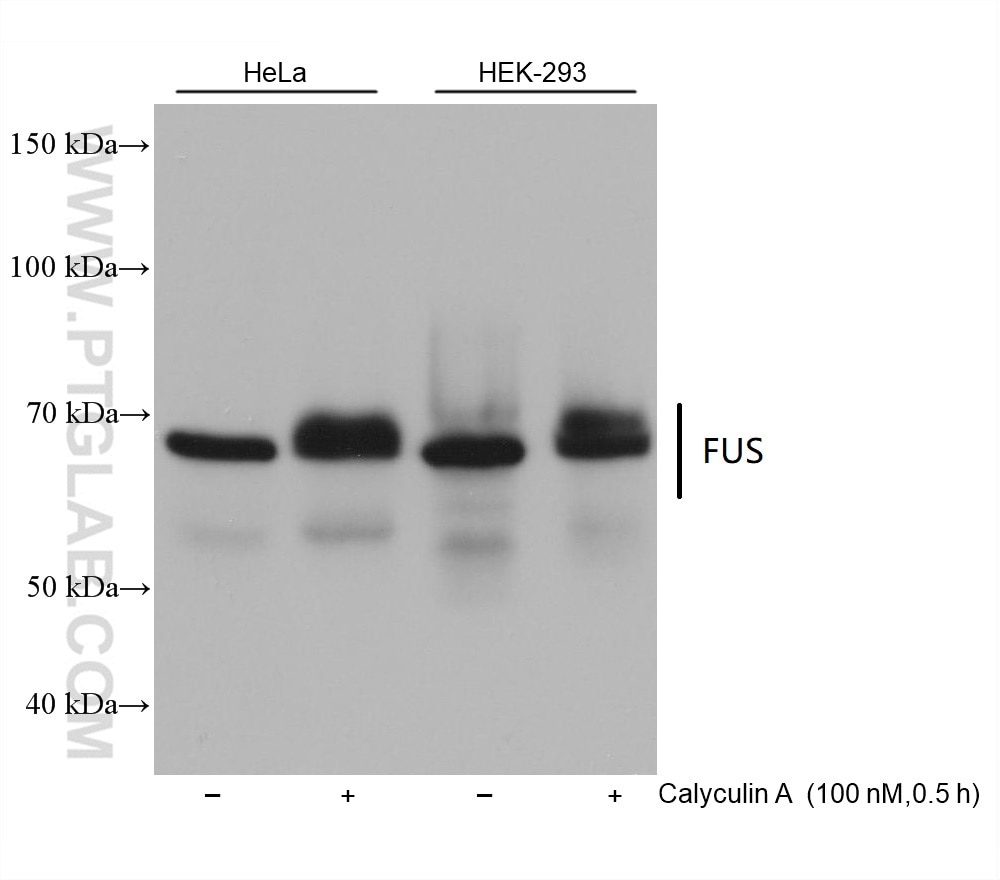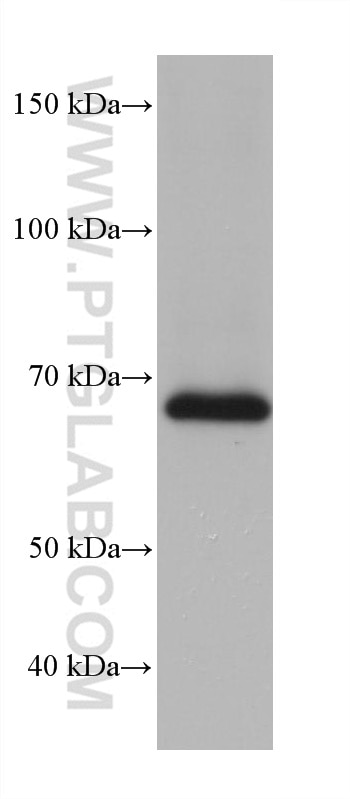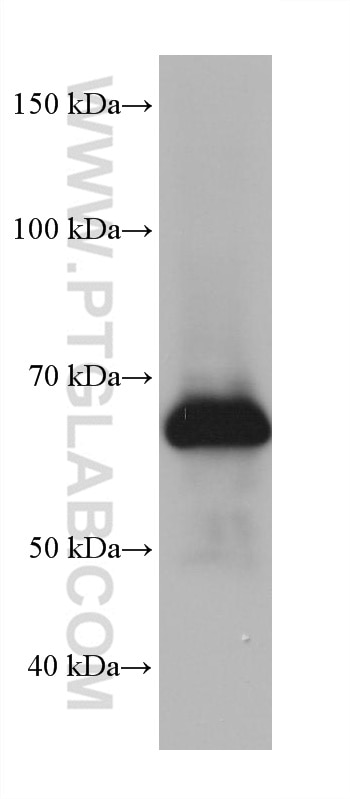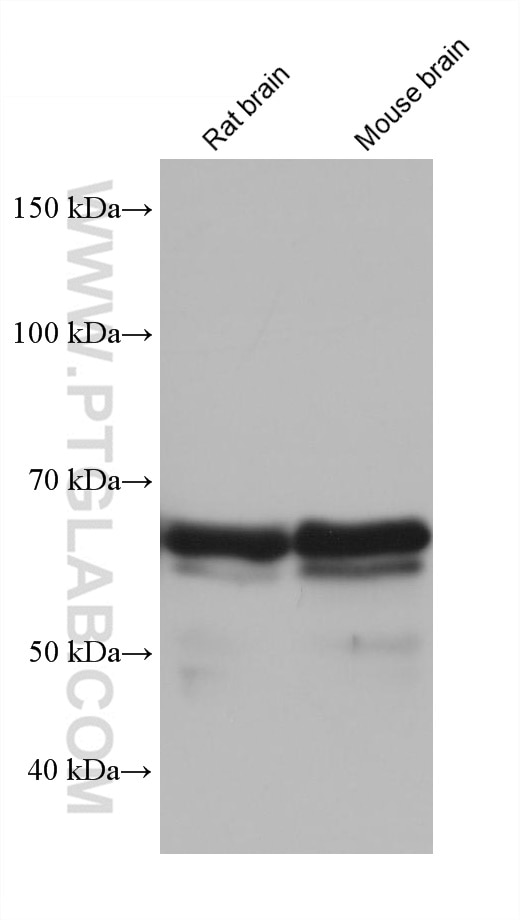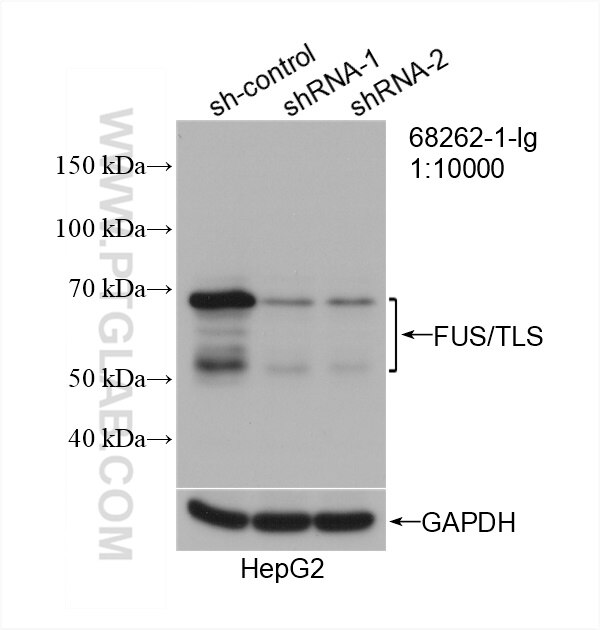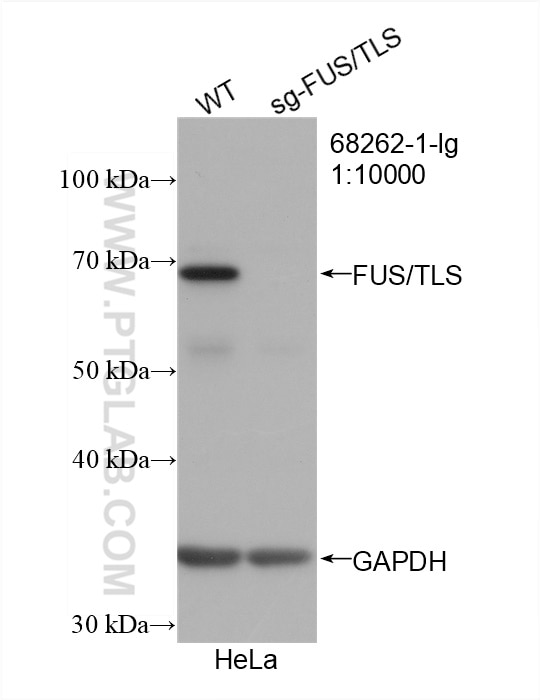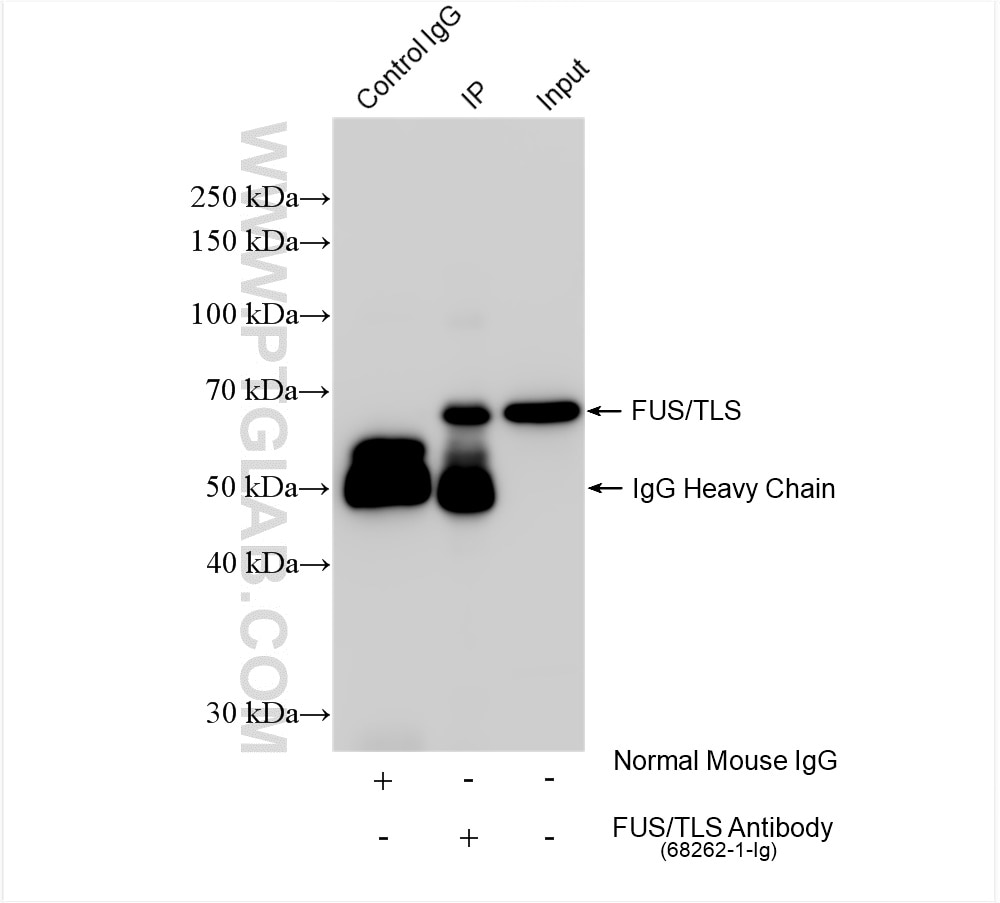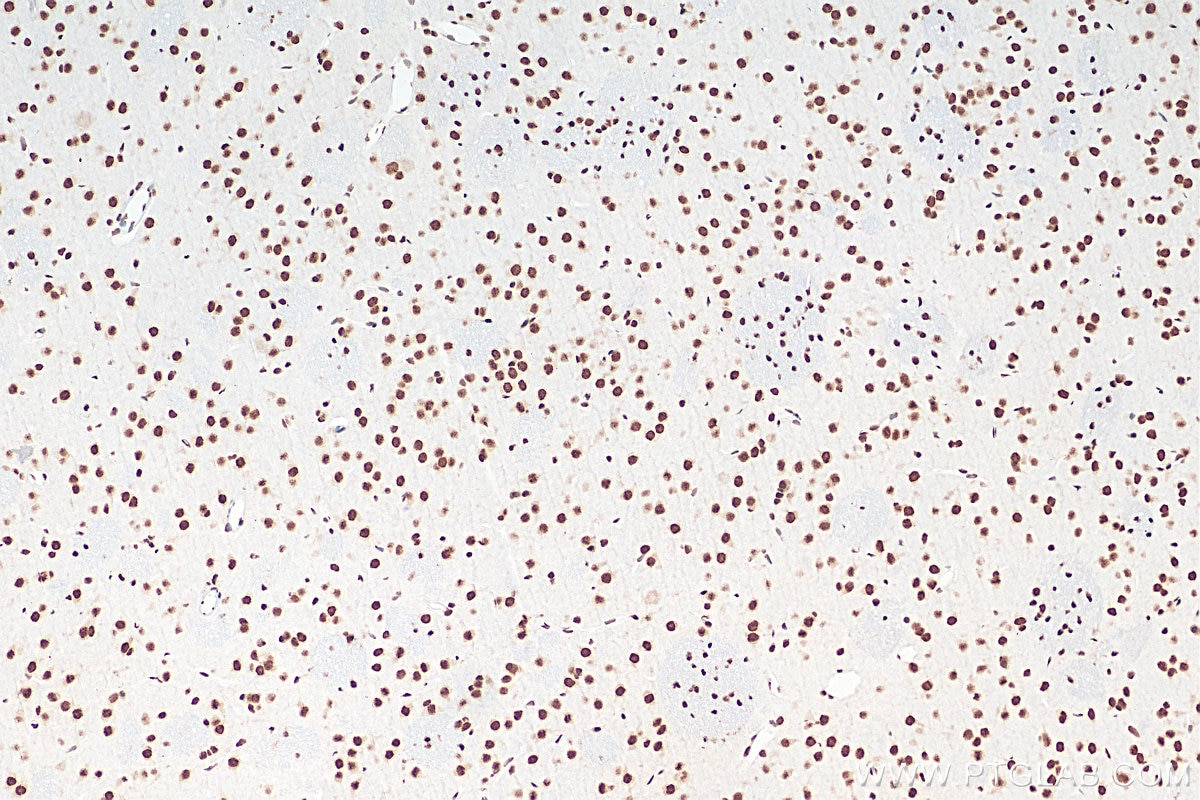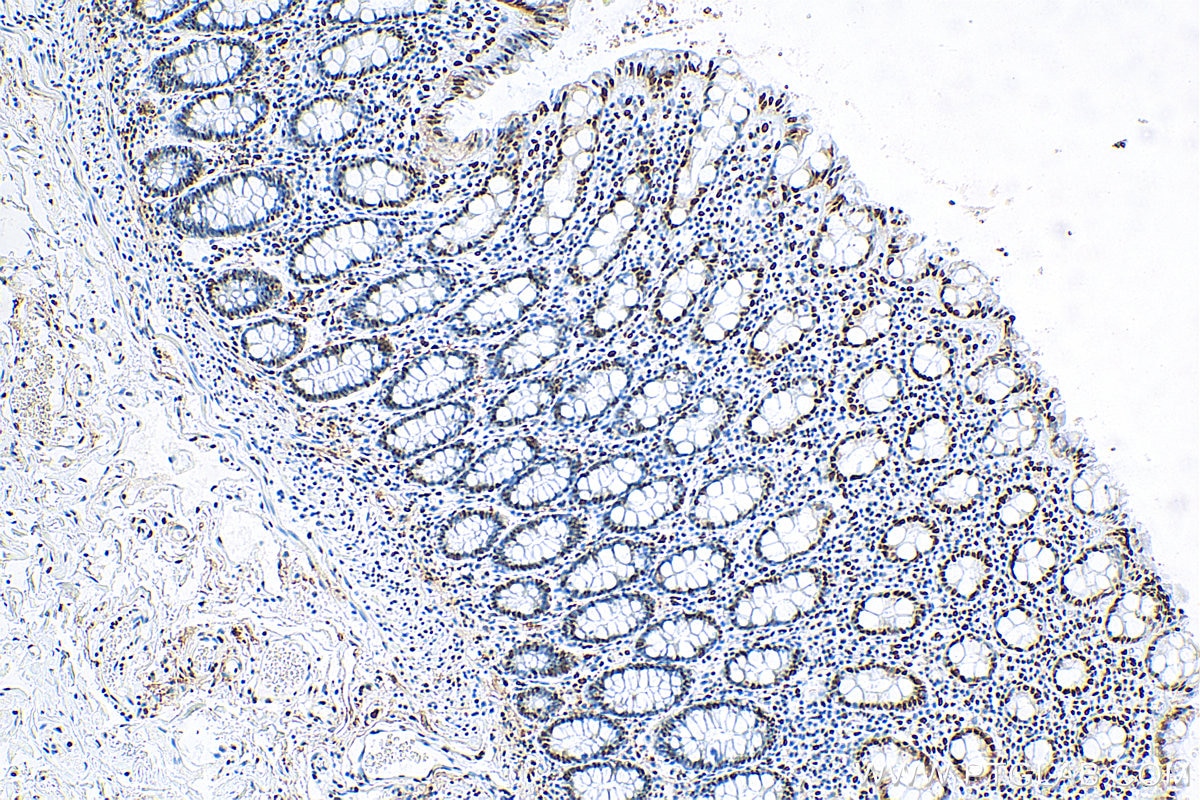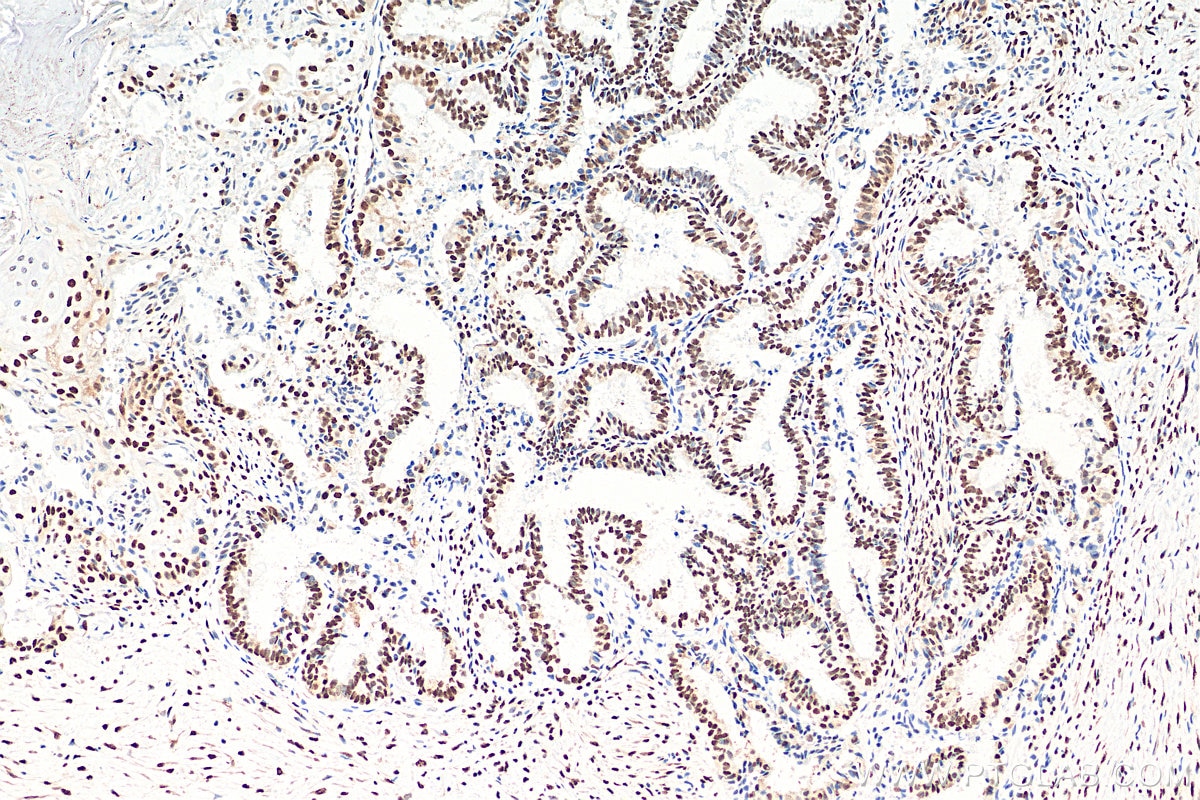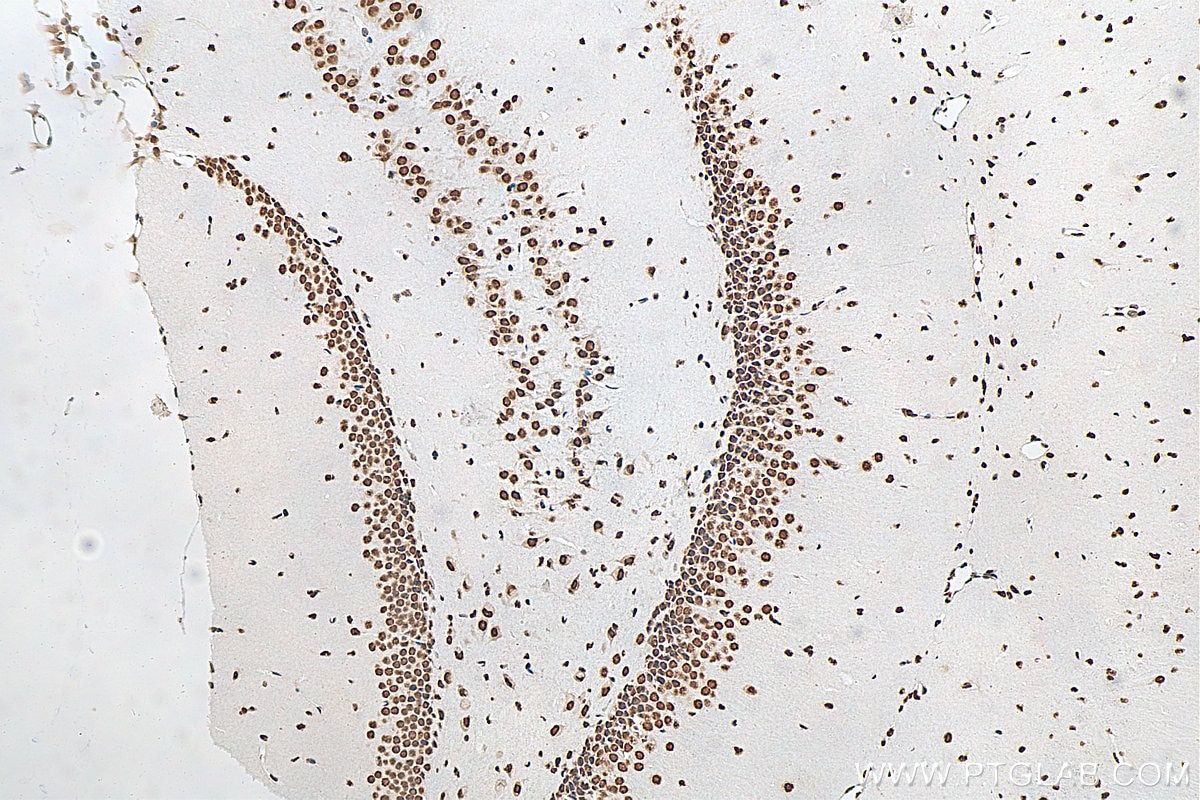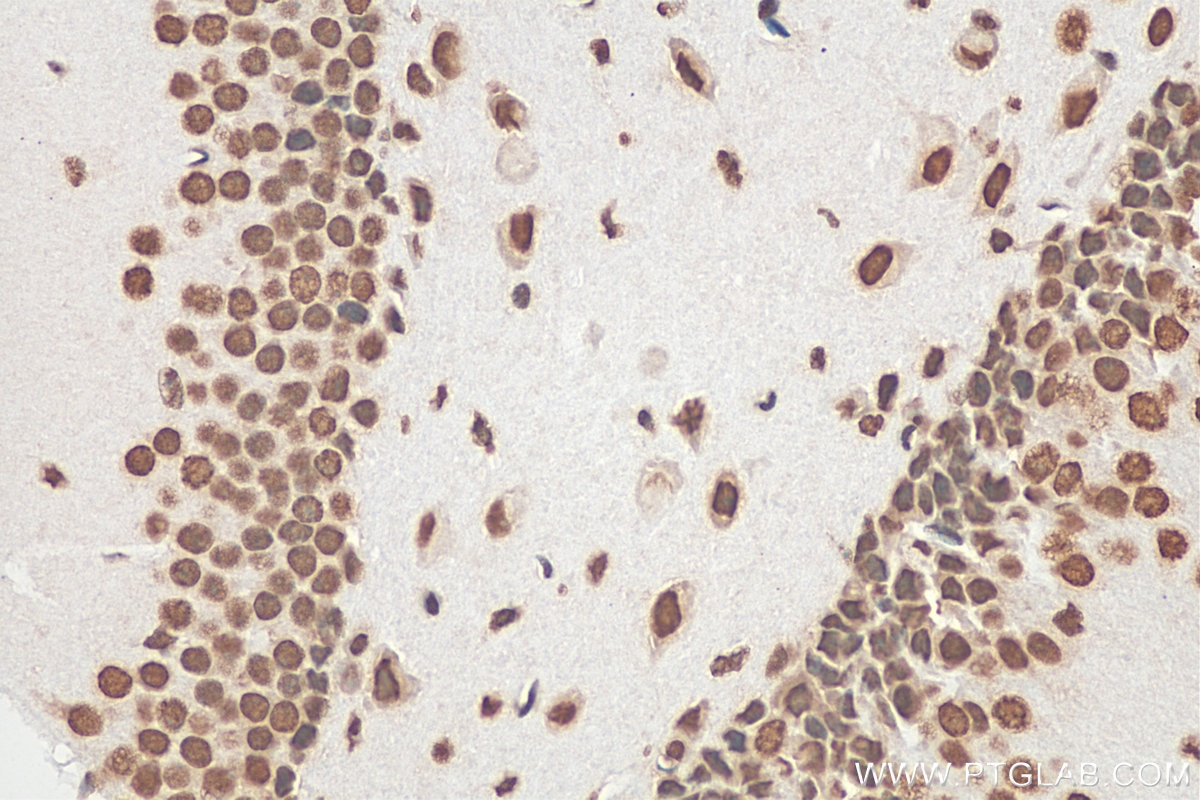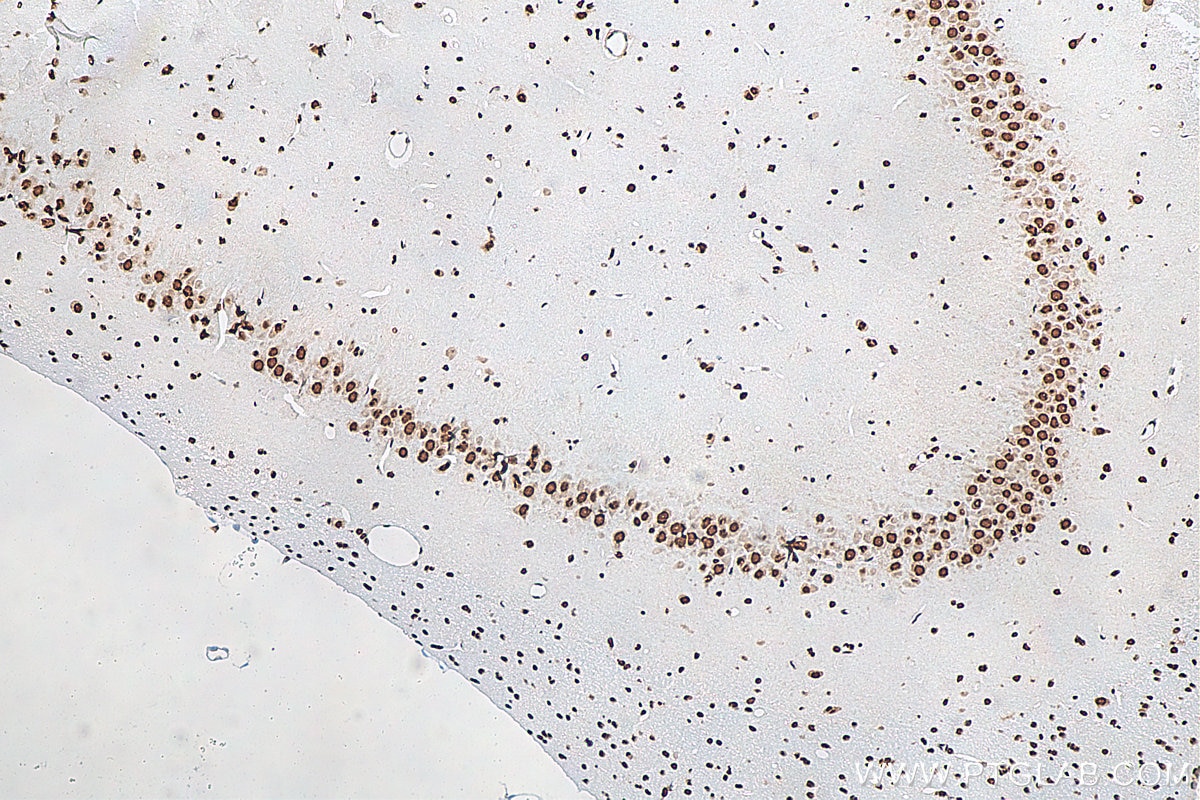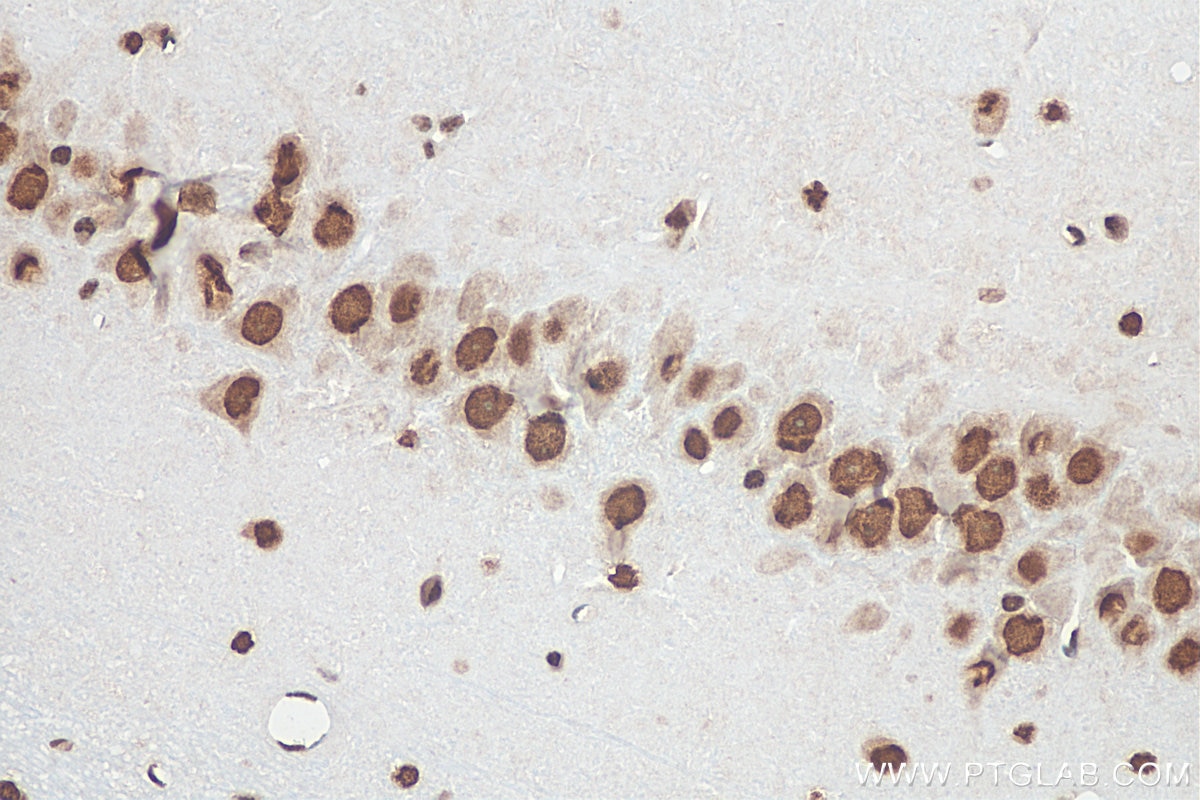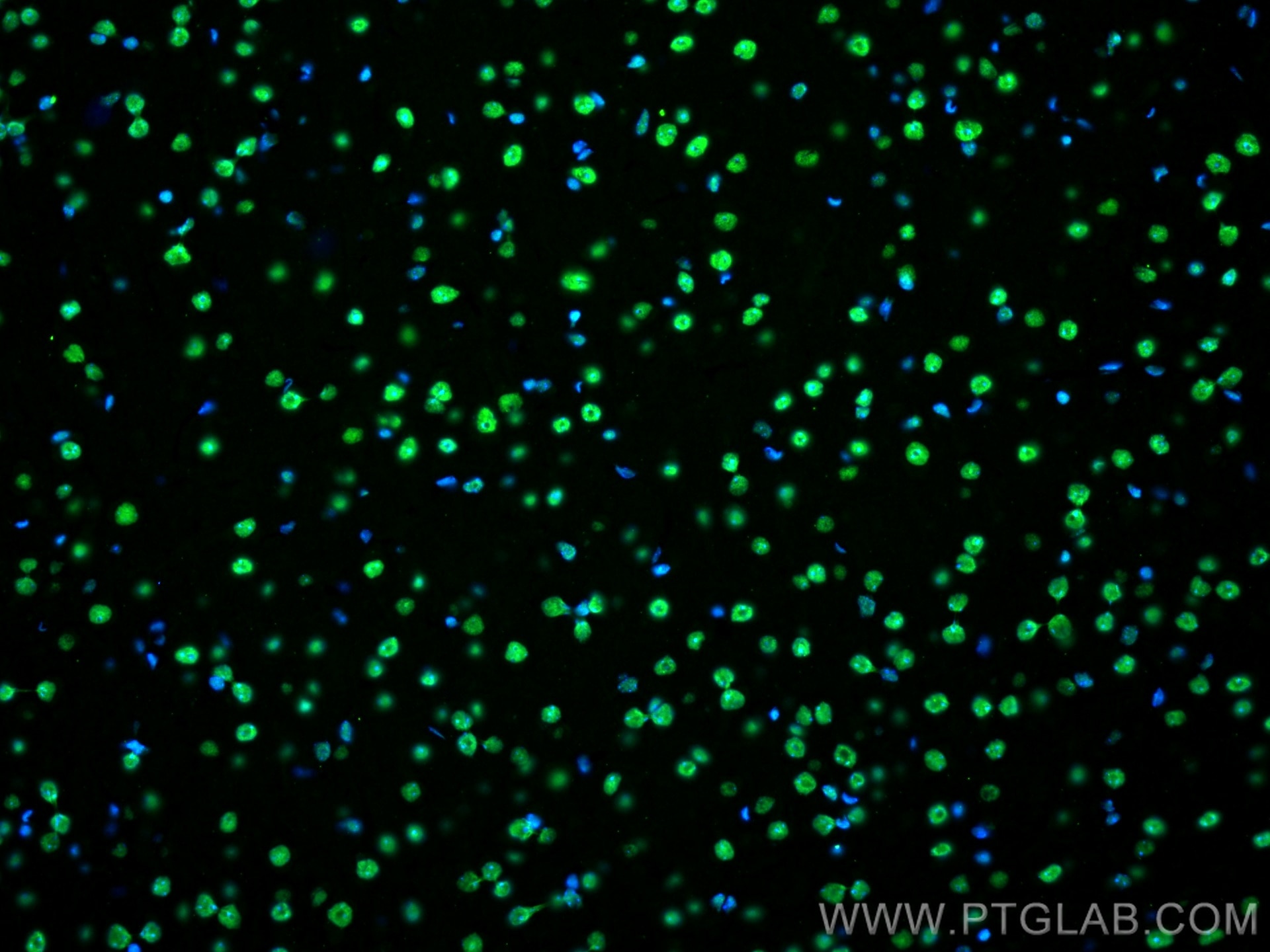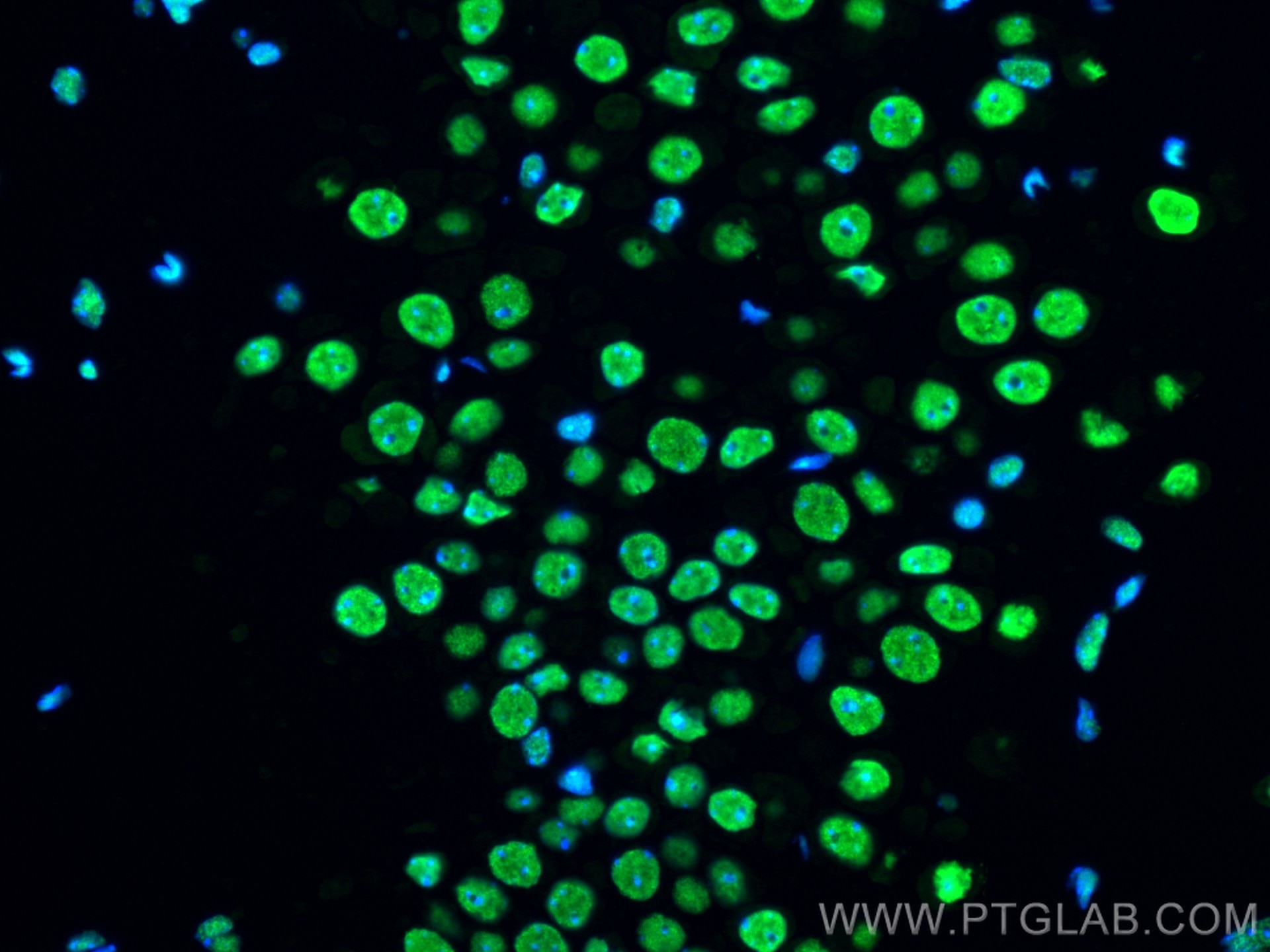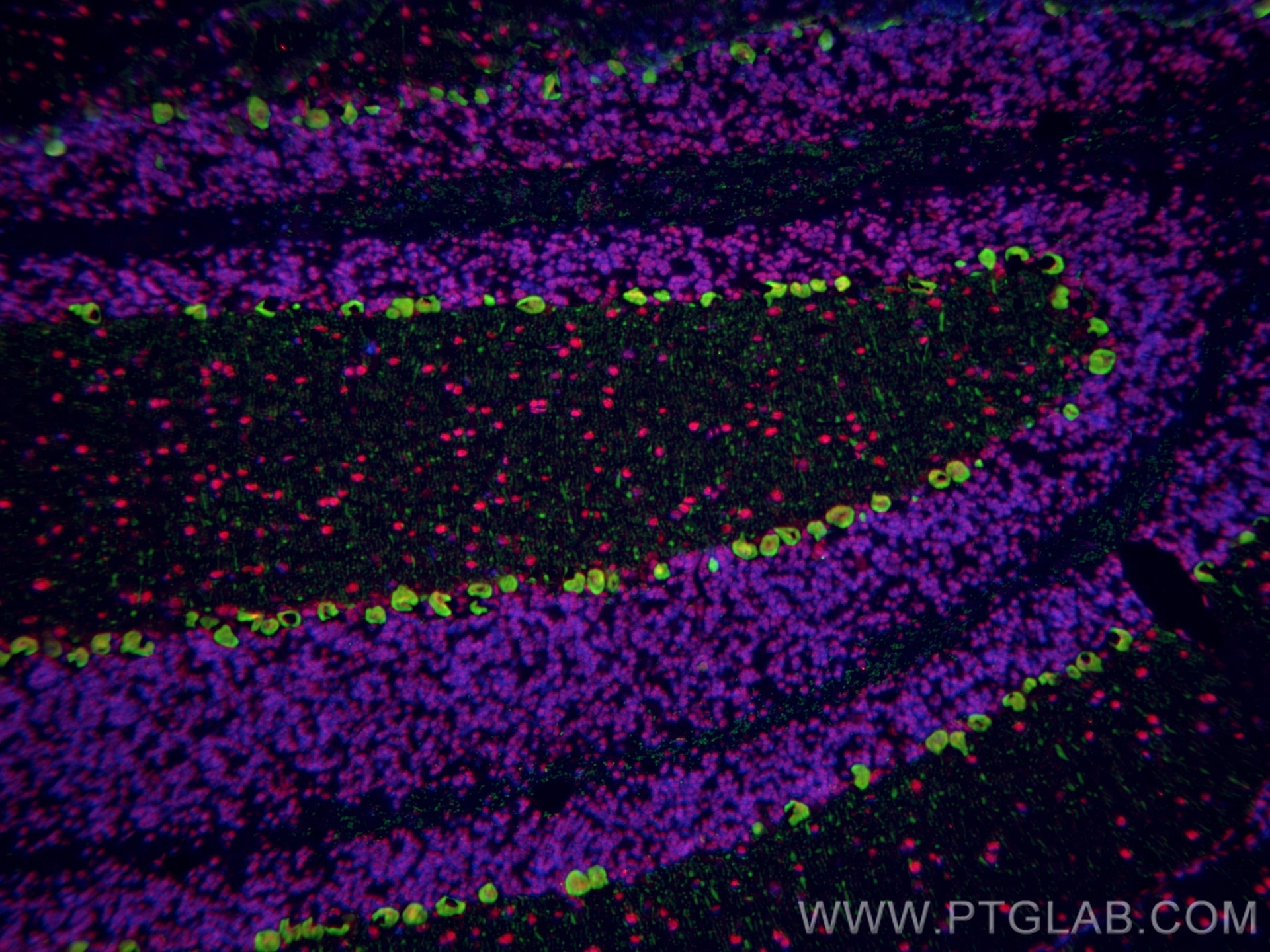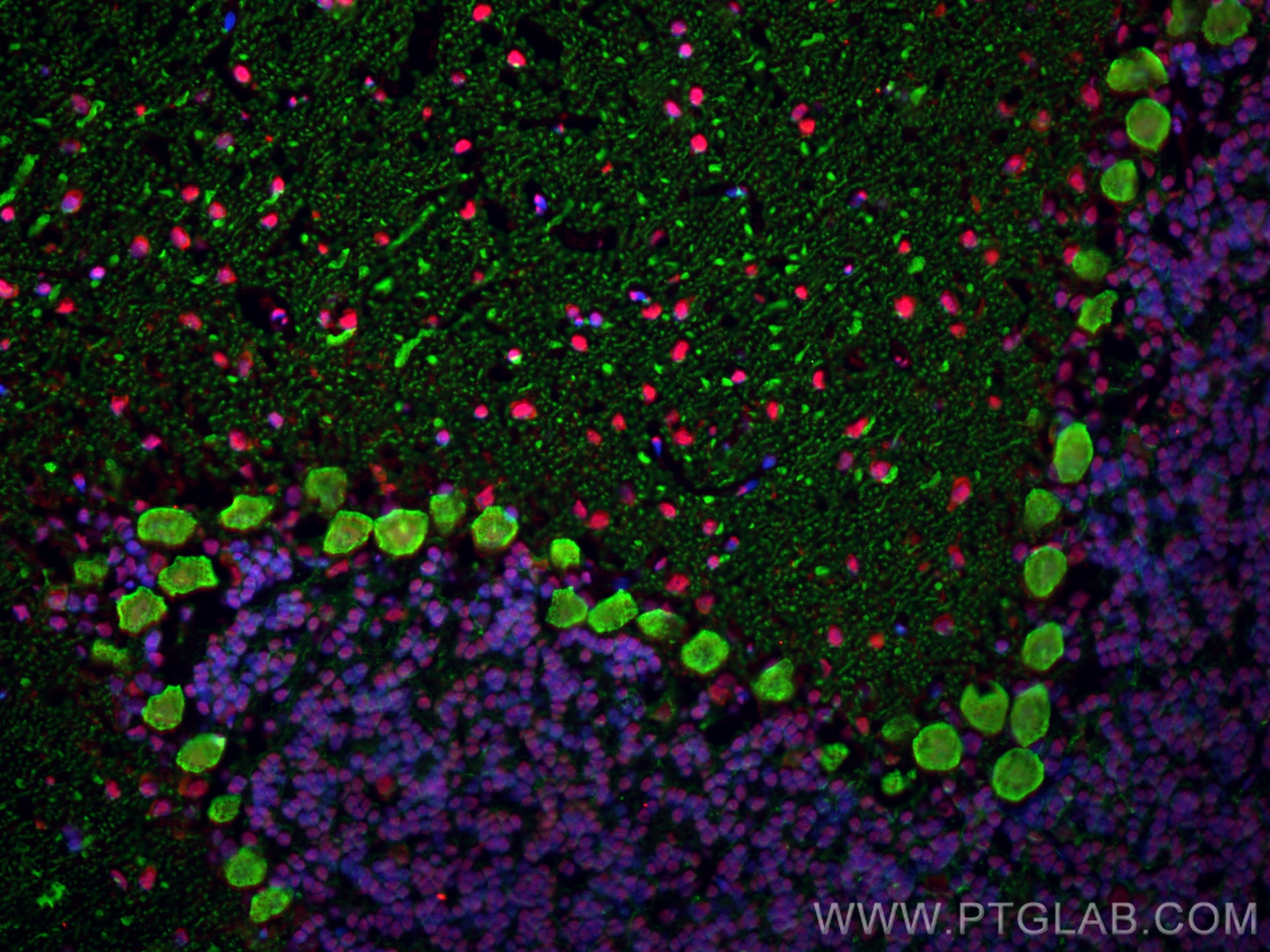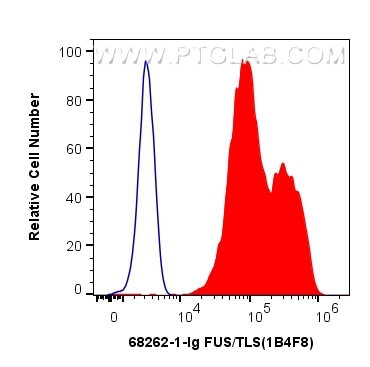- Phare
- Validé par KD/KO
Anticorps Monoclonal anti-FUS/TLS
FUS/TLS Monoclonal Antibody for WB, IHC, IF-P, IF-Fro, FC (Intra), IP, ELISA
Hôte / Isotype
Mouse / IgG1
Réactivité testée
Humain, rat, souris
Applications
WB, IHC, IF-P, IF-Fro, FC (Intra), IP, ELISA
Conjugaison
Non conjugué
CloneNo.
1B4F8
N° de cat : 68262-1-PBS
Synonymes
Galerie de données de validation
Informations sur le produit
68262-1-PBS cible FUS/TLS dans les applications de WB, IHC, IF-P, IF-Fro, FC (Intra), IP, ELISA et montre une réactivité avec des échantillons Humain, rat, souris
| Réactivité | Humain, rat, souris |
| Hôte / Isotype | Mouse / IgG1 |
| Clonalité | Monoclonal |
| Type | Anticorps |
| Immunogène | FUS/TLS Protéine recombinante Ag2150 |
| Nom complet | fusion (involved in t(12;16) in malignant liposarcoma) |
| Masse moléculaire calculée | 75 kDa |
| Poids moléculaire observé | 53 kDa, 68-75 kDa |
| Numéro d’acquisition GenBank | BC026062 |
| Symbole du gène | FUS/TLS |
| Identification du gène (NCBI) | 2521 |
| Conjugaison | Non conjugué |
| Forme | Liquide |
| Méthode de purification | Purification par protéine G |
| Tampon de stockage | PBS only |
| Conditions de stockage | Store at -80°C. 20ul contiennent 0,1% de BSA. |
Informations générales
FUS (also named TLS and POMp75) belongs to the RRM TET family. FUS may play a role in the maintenance of genomic integrity; it binds both single-stranded and double-stranded DNA and promotes ATP-independent annealing of complementary single-stranded DNAs and D-loop formation in superhelical double-stranded DNA. FUS is also an RNA-binding protein, and its links to neurodegenerative disease proffer the intriguing possibility that altered RNA metabolism or RNA processing may underlie or contribute to neuron degeneration[PMID: 22640227]. FUS may be a cause of angiomatoid fibrous histiocytoma (AFH) and is implicated in certain forms of amyotrophic lateral sclerosis (ALS) and frontotemporal dementias (FTDs) such as frontotemporal lobar dementia with ubiquitin inclusions (FTLD-U)(PMID: 22640227). Multiple phosphorylation on the N terminus of FUS caused that FUS was detected 68-75 kDa (PMID:24899704).
